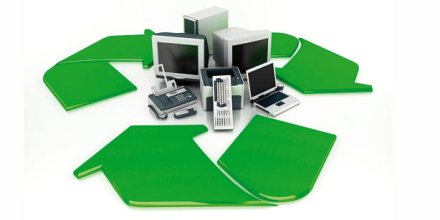Here is another entry in Students Article category of official blog of Imperial College. Ms. Rajeevi, a full-time student of Imperial College of Business Studies-Bangalore, shares her thought on the rising problems of waste management, specially when it comes to waste products generated from outdated electronic devices. Such waste products are not recyclable due to their obsolete usage and subsequent isolation in the backdrop of concurrent technological advancement. And as a result, it arises severe environmental hazards. Read more about it below. Happy Reading !
Last year, two inspectors from California’s hazardous waste agency were visiting an electronics recycling company near Fresno for a routine review of paperwork when they came across a warehouse the size of a football field, packed with tens of thousands of old computer monitors and televisions.
The crumbling cardboard boxes, stacked in teetering rows, 9 feet high and 14 feet deep, were so sprawling that the inspectors needed cell phones to keep track of each other. The layer of broken glass on the floor and the lead-laden dust in the air was so thick that the inspectors soon left over safety concerns. Weeks later, the owner of the recycling company disappeared, abandoning the waste, and leaving behind a toxic hazard and a costly cleanup for the state and the warehouse’s owner.
As recently as a few years ago, broken monitors and televisions like those piled in the warehouse were being recycled profitably. The big, glassy funnels inside these machines — known as cathode ray tubes, or CRTs — were melted down and turned into new ones.
But flat-screen technology has made those monitors and televisions obsolete, decimating the demand for the recycled tube glass used in them and creating what industry experts call a “glass tsunami” as stockpiles of the useless material accumulate across the country.
The predicament has highlighted how small changes in the marketplace can suddenly transform a product into a liability and demonstrates the difficulties that federal and state environmental regulators face in keeping up with these rapid shifts.
“Lots of smaller recyclers are in over their heads, and the risk that they might abandon their stockpiles is very real,” said Jason Linnell of the Electronics Recycling Coordination Clearinghouse, an organization that represents state environmental regulators, electronics manufacturers and recyclers. In February, the group sent a letter to the Environmental Protection Agency asking for immediate help dealing with the rapidly growing stockpiles of the glass, much of which contains lead.
With so few buyers of the leaded glass from the old monitors and televisions, recyclers have collected payments from states and electronics companies to get rid of the old machines. A small number of recyclers have developed new technology for cleaning the lead from the tube glass, but the bulk of this waste is being stored, sent to landfills or smelters, or disposed of in other ways that experts say are environmentally destructive.
In 2004, recyclers were paid more than $200 a ton to provide glass from these monitors for use in new cathode ray tubes. The same companies now have to pay more than $200 a ton to get anyone to take the glass off their hands.
So instead of recycling the waste, many recyclers have been storing millions of the monitors in warehouses, according to industry officials and experts. The practice is sometimes illegal since there are federal limits on how long a company can house the tubes, which are environmentally dangerous. Each one can include up to eight pounds of lead.
The scrap metal industry estimates that the amount of electronic waste has more than doubled in the past five years.
A little over a decade ago, there were at least 12 plants in the United States and 13 more worldwide that were taking these old televisions and monitors and using the cathode ray tube glass to produce new tubes. But now, there are only two plants in India doing this work.
In 2009, after television broadcasters turned off their analog signals nationwide in favor of digital, millions of people threw away their old televisions and replaced them with sleeker flat-screen models. Since then, thousands of pounds of old televisions and other electronic waste have been surreptitiously unloaded at landfills in Nevada and Ohio and on roadsides in California and Maine.
Most experts say that the larger solution to the growing electronic waste problem is for technology companies to design products that last longer, use fewer toxic components and are more easily recycled. Much of the industry, however, seems to be heading in the opposite direction.
Cathode ray tubes have been largely replaced by flat panels that use fluorescent lights with highly toxic mercury in them, said Jim Puckett, director of Basel Action Network, an environmental advocacy group. Used panel screens from LCD televisions and monitors, for example, do not have much recycling value; so many recyclers are sending them to landfills.
(To know more about Imperial College of Business Studies, visit our website or follow us on Facebook)


